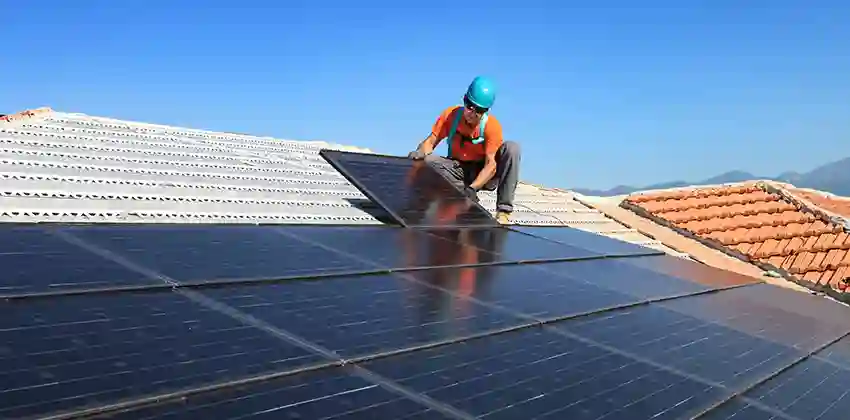As the world increasingly embraces renewable energy sources, solar power stands out as a leading solution for clean and sustainable electricity generation. Whether you’re considering a solar panel system for your home, business, or any other application, one critical aspect to get right is sizing your solar system. The size of your solar system should be carefully matched to your energy needs to ensure optimal performance, maximum cost savings, and a positive environmental impact. In this comprehensive guide, we’ll explore the key factors involved in sizing your solar system correctly.
Understanding Solar System Sizing
Sizing a solar system refers to determining the appropriate capacity or size of the system to meet your specific energy requirements. The goal is to strike a balance between generating enough electricity to cover your needs while avoiding the over-sizing of your solar array, which can lead to unnecessary expenses.
Proper solar system sizing involves considering various factors, including:
- Your Energy Consumption: Your historical energy consumption data, typically measured in kilowatt-hours (kWh), serves as a starting point. This data helps you understand your average and peak electricity usage over time.
- Location and Sunlight: Your geographical location plays a significant role in determining the amount of sunlight your solar panels will receive. Solar irradiance data for your area helps estimate the solar energy potential.
- Shading and Obstructions: Assess any shading from nearby structures, trees, or obstructions that may affect the efficiency of your solar panels. Minimizing shading is crucial for maximizing energy production.
- Panel Efficiency: The efficiency of your solar panels affects their ability to convert sunlight into electricity. Higher efficiency panels can generate more power in the same amount of space.
- Orientation and Tilt: The orientation (direction) and tilt angle of your solar panels impact their energy capture. Ideally, panels should face south (in the Northern Hemisphere) and be tilted at an angle equal to your latitude.
- System Type: The type of solar panel system you choose, such as grid-tied, off-grid, or hybrid, will influence your sizing decisions. Grid-tied systems may require fewer panels if you can rely on the grid for backup power.
- Battery Storage: If you plan to incorporate battery storage into your system, the size and capacity of your battery bank will affect your solar system sizing.
Steps to Proper Solar System Sizing
To accurately size your solar system, follow these steps:
1. Collect Energy Usage Data
Begin by gathering historical energy usage data from your utility bills. You’ll want to examine your monthly electricity consumption over the course of a year to identify trends and patterns. Pay attention to any significant fluctuations or seasonal variations in your energy use.
2. Determine Your Daily Energy Needs
To determine your daily energy needs, divide your annual energy consumption by 365 (the number of days in a year). This will give you an average daily energy requirement. Additionally, identify any specific peak periods of electricity usage, as this information will help you size your solar system to meet those demands.
3. Account for Location and Sunlight
Your geographical location significantly influences the amount of sunlight your solar panels can capture. Solar irradiance data, often available from local weather or solar energy resources, provides insights into the average daily sunlight hours in your area. Multiply the daily solar irradiance by your panel’s efficiency to estimate daily energy generation per panel.
4. Consider Shading and Obstructions
Evaluate your property for potential shading issues. Identify any objects or structures that cast shadows on your solar panels during the day. Minimizing shading is essential for optimizing solar system performance. If shading cannot be avoided entirely, consider using microinverters or power optimizers to mitigate its impact.
5. Calculate Panel Quantity
Divide your daily energy needs (step 2) by the daily energy generation per panel (step 3) to determine the number of panels required to meet your energy needs. Keep in mind that solar panels are typically sold in standard sizes, so you may need to round up to the nearest whole panel.
6. Adjust for System Type and Battery Storage
The type of solar panel system you choose and whether you incorporate battery storage will affect your sizing calculations. Grid-tied systems rely on the electrical grid for backup power, which may allow you to install a smaller solar array. In contrast, off-grid systems require enough solar capacity to meet all your energy needs, possibly with a larger battery bank to store excess energy.
7. Consult a Solar Professional
While the steps mentioned above can help you estimate your solar system size, it’s advisable to consult with a solar professional or installer. They can perform a detailed assessment of your property, factor in local conditions, and provide a more precise system size recommendation.
The Importance of Accurate Sizing
Properly sizing your solar system is crucial for several reasons:
- Optimal Performance: A correctly sized system will generate enough electricity to meet your energy needs, ensuring optimal performance and maximizing your return on investment (ROI).
- Cost-Efficiency: Over-sizing your system can result in unnecessary upfront expenses, while under-sizing may leave you reliant on the grid for additional power, potentially negating the financial benefits of solar.
- Environmental Impact: Accurate sizing ensures that your solar system generates a sufficient amount of clean energy, reducing your carbon footprint and reliance on fossil fuels.
- Grid Integration: A well-sized solar system can integrate seamlessly with the electrical grid, allowing you to take advantage of net metering and potentially earn credits for excess energy you produce.
- Energy Independence: With the right-sized solar system and battery storage (if desired), you can achieve greater energy independence and resilience, reducing your vulnerability to power outages.
Conclusion
Sizing your solar system is a critical step in harnessing the power of the sun to meet your energy needs while promoting sustainability and reducing your reliance on traditional energy sources. By carefully considering factors such as your energy consumption, location, shading, and system type, you can accurately determine the capacity of your solar panel array.
Remember that consulting with a solar professional is advisable for a comprehensive assessment and precise sizing recommendations. With the right-sized solar system, you can enjoy the benefits of clean and renewable energy, lower energy bills, and a reduced environmental impact for years to come.







